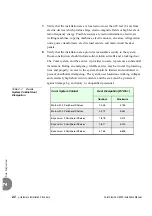
Coral FlexiCom 6000 Installation Manual
Introduction
1-5
S
ystem Des
cription
1
1.2
System Description
Coral System General Features
The Coral FlexiCom 6000
is a digital, hot standby, redundant, communications
switching system. The Coral system is based on Pulse Coded Modulation (PCM)
switching technology. The active circuitry of the system is contained on removable
printed circuit assemblies, or cards, nearly all of which may be used in any system in
the family.
The active circuitry of the Coral system is divided into two major functions: Common
Control and Peripheral. The Common Control circuitry directs call traffic through the
system, establishing audio connections between Peripheral ports.
The Peripheral circuitry provides the hardware necessary to establish those
connections. Instructions from the Common Control circuitry to the Peripheral
circuitry, and status information from the Peripheral circuitry to the Common Control
circuitry are passed through the Group Controller, which provides driver and time slot
interchange functions for the PCM highways and the HDLC channels.The peripheral
circuitry is further divided into Shared Service and Peripheral Interface functions. The
Shared Service circuitry provides the equipment necessary to establish calls between
Peripheral interfaces. The Peripheral Interface circuitry provides standardized
electrical connections to external telephone station equipment and network facilities.
Coral FlexiCom 6000 Redundancy
The Coral FlexiCom 6000
system is a non-stop, non-blocking operation. The system’s
Hot Standby dual control option includes two complete sets of control hardware, each
able to fully and independently control the operations of the entire system. The two
sets function interchangeably, making it possible for either set to take over control
functions automatically in the event of malfunction to any portion of the control
system. Administrators can manually intervene as needed and activate the switch over
from one control system set to the other to carry out routine maintenance, as well as
...................................................................................................
1
System Overview
















































